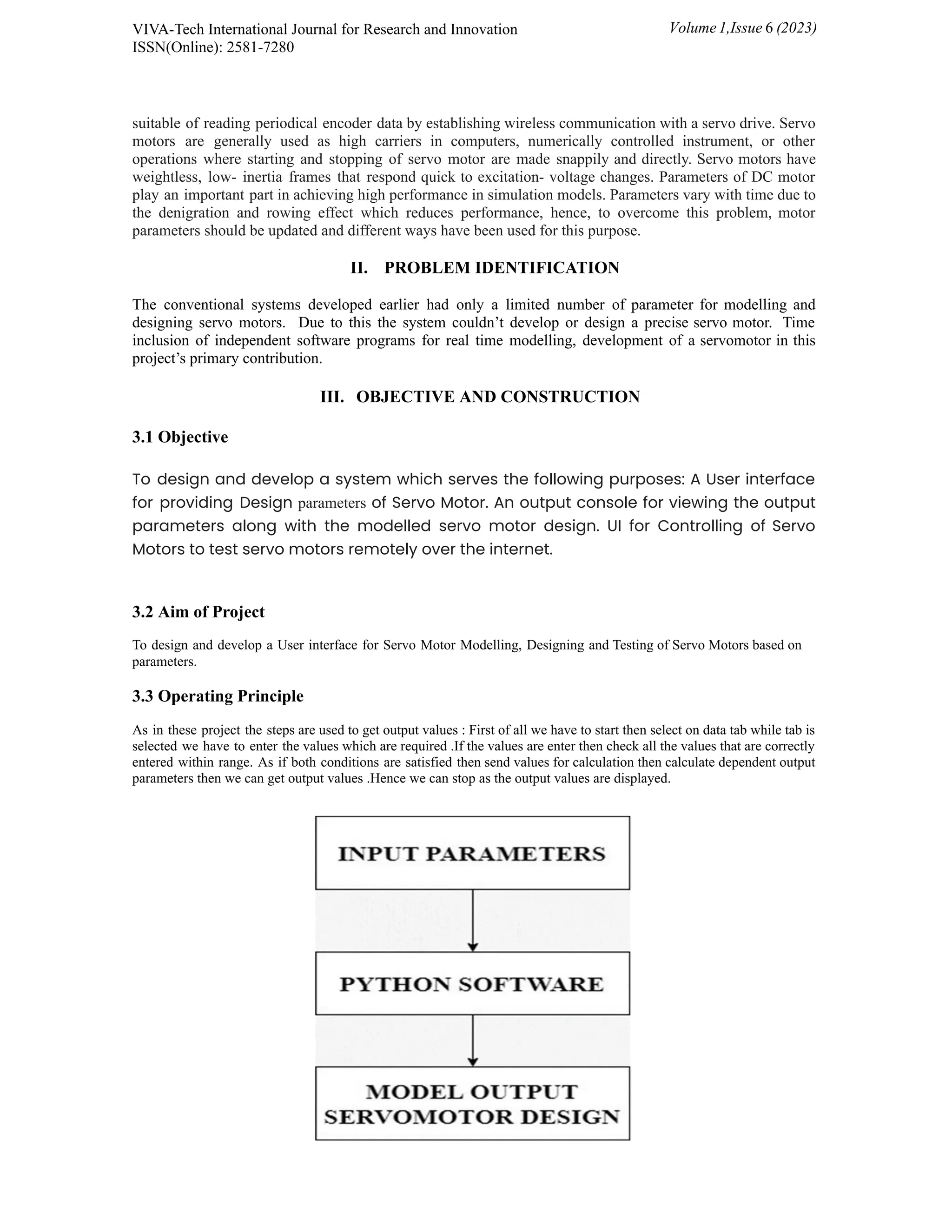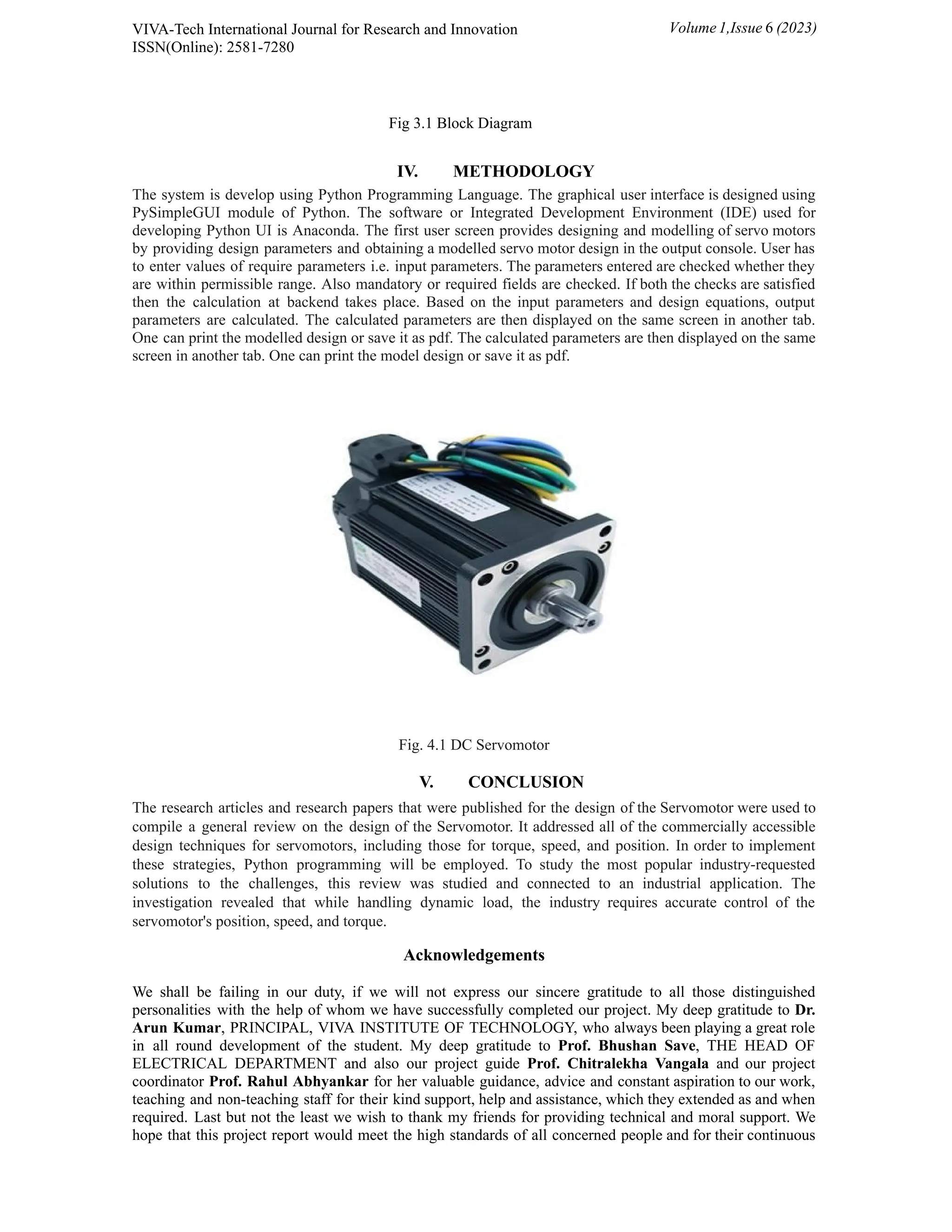The document discusses the design and modeling of a servomotor using Python programming, highlighting its precision in controlling speed, position, and acceleration through a graphical user interface. It outlines the methodology, objectives, and operating principles of the system, aiming to improve the accuracy and reliability of servo motors in various applications, such as robotics and CNC manufacturing. The study concludes by presenting a review of existing design techniques and emphasizes the need for accurate control under dynamic loads.



![VIVA-Tech International Journal for Research and Innovation ISSN(Online): 2581-7280 co-operation during the whole period of project that helped us in enhancement of this project. REFERENCES [1] Ashna Batool, Noor ul Ain, Arslan Ahmed Amin, Muhammad Adnan & Muhammad Hamza Shahbaz, ‘A comparative study of DC servo motor parameter estimation using various techniques’, published by informa UK Limited, trading as Taylor published in “2022” [2] Damien Rolon-M´erette a B, Matt Ross a, Thadd´e Rolon-M´erette a & Kinsey Church, ‘Introduction to Anaconda and Python: Installation and setup’, published by University Ottawa published in “2020” [3] Hendri Maja Saputra, Abdurrahman Nurhakim, Midriem Mardanies, ‘Design of Servo Motor Controller Device for Antenna Stabilization Based on PID Controller’, International conference on Computer , control and its application published in “2019” [4] Erkan Mese , Yusuf Yasa , ‘Design of a high performance servo motor for low speed high torque application’, International conference on electrical machines published in “2014”. [5] Yusuf Yasa , Ergin Sahin, ‘Servo motor Driver design on high performance application’, International conference on electric power and energy conversion system published in “2013”. [6] Mohd Fua’ad, Rahmat & Mohd Syakirin Ramli Servomotor control using direct digital control and state-space techniques In IEEE 24 Nov 2014. [7] R. Wai, & R. Muthusamy, Fuzzy-Neural-Network Inherited Sliding-Mode Control for Robot Manipulator Including Actuator Dynamics, IEEE Transactions on Neural Networks and Learning Systems, Vol. 24, NO. 2, 2013. [8] K. Seki, H. Yokoi & M. Iwasaki, Experimental evaluations of friction behavior in microdisplacement region positioning for servo motor with air bearings, Proceeding of IEEE International Conference on Advanced Intelligent Mechatronics, "2012“. Volume1,Issue 6 (2023)](https://image.slidesharecdn.com/elec11-241010042301-8d6f5cc8/75/Software-Development-Using-Python-Language-For-Designing-Of-Servomotor-4-2048.jpg)